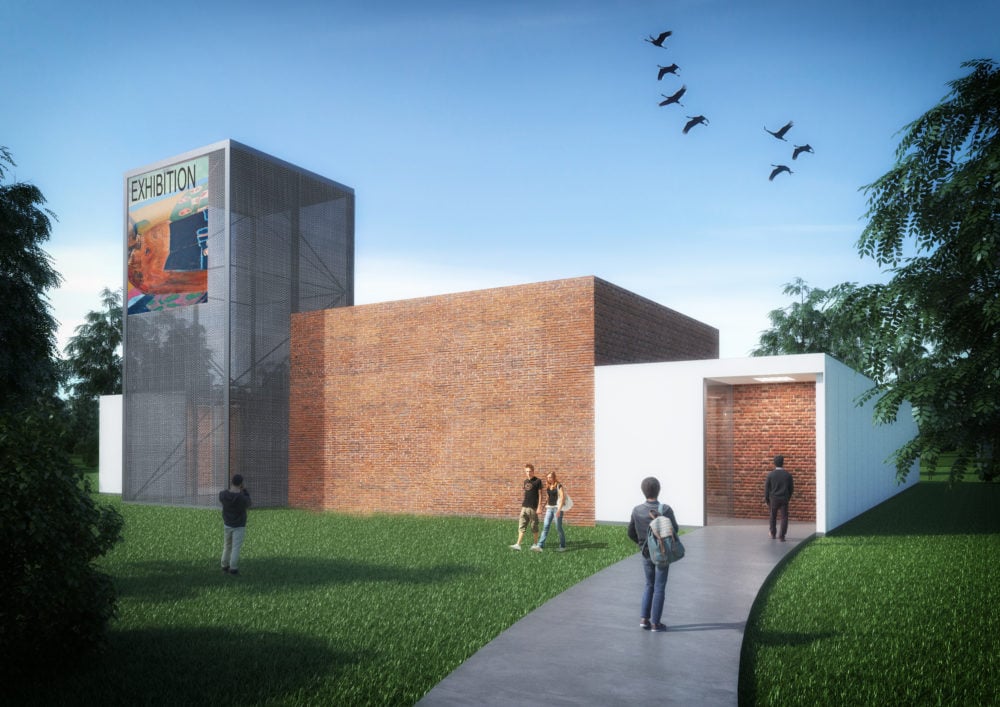
Have you always wanted to build your own private museum, but lack the time and money to do the job right? One collector wants to make it easier than ever to create your own personal Broad or Rubell Collection.
Filipino art collector and real estate developer Robbie Antonio has unveiled a radical new plan for prefabricated structures designed to house and display art. He has teamed up with Pritzker Prize-winning French architects Jean Nouvel and Christian de Portzamparc to create a series of so-called “reproducible museums.” For less than $1 million, an aspiring Eli Broad can build his own institution in as little as six months.
Under the auspices of Revolution Precrafted—the design company he founded in 2015—Antonio plans to offer modular prefab structures that are customized to the buyer or institution’s specific needs. Structures can be tailored to display design, sculpture, or painting. If your collection includes video, you can arrange for a soundproof room. One modular component, described as the “Big Hall,” is well suited to house monumental sculptures.
“The entire concept of modularity, flexibility, and transportability moved me and created an impetus for really challenging the norm,” Antonio told artnet News in a phone interview from Manila. The structure can be used as “a formal museum space, or, for instance, a space for performance art, depending on the individual.”
Nighttime exterior rendering. Courtesy Revolution Precrafted Properties.
He says the audience for his new product “could be a business that wants to put a museum on their land, or a collector who literally wants to house his or her collection, or a government or country that does’t have a museum but wants to collect art.”
In recent years, Antonio has introduced a series of modular prefab homes designed by famous architects, artists and designers, including Zaha Hadid, David Salle, Ron Arad, and Studio Libeskind. The business is growing: in the Mt Batulao area of the Philippines alone, he has plans to supply and co-develop over 1,050 homes at prices ranging roughly from $80,000 to $540,000.
“My thesis is very simple and straightforward,” says Antonio. “If I could do this for homes in a fifth of the time it takes for a regular home, why can’t I do it for larger structures?”
According to a 2013 Vanity Fair profile, Antonio has a contemporary art-filled mansion in Manila—including many commissioned portraits of himself—that was designed by starchitect Rem Koolhaas at a cost of more than $15 million.
In addition to the obvious cost advantage over bricks and mortar, these museums can be completed in a much shorter time frame, Antonio notes. The entire process—from initial order to design to finished product—could take “basically six months to a year,” he says. (For comparison, the Broad in Los Angeles, the private museum established by Eli and Edythe Broad in 2015, took five years and $140 million to build.)
But will Antonio’s project actually fill a void? The number of private museums is certainly on the rise. According to a report published in early 2016 by art website Larry’s List, there are 317 privately funded contemporary art museums in the world today, 70 percent of which were founded post-2000. (That said, the jury is still out on how many people have the funds—and the collection—to justify a private museum but still would prefer to save on modular architecture.)
According to de Portzamparc’s drawings and models shared with artnet News, the reproducible museum concept offers three customizable components: the block module, or main part of the museum; the big hall module for oversize art works; and the tower module, for staircases and signage. One version of that project would cost between $1.5-2 million, according to Antonio.
Asked about the challenges of applying prefab methodology to a museum structure, de Portzamparc told artnet News: “The boxes are put together to create a space that considers the standards of a museum structure: security, thermal requirements, acoustic treatments. The basic boxes adapt to the function of the structure, but come complete with all mechanical, plumbing, and electrical systems.”
So far, Antonio is his own best customer. The collector has already commissioned several museum structures for himself as part of his ambitious plans for what he calls the world’s first “liveable art park.”
The park will be located an hour and a half’s drive from the central business district of the Philippines in Mt. Batulao. The park will include four prefab museums: one for modern and contemporary art, one for design and architecture (to be built by Nouvel), one for performance art, and one for “showcasing highly immersive, out-of-the-box interactive art,” according to a statement.
Christian de Portzamparc’s “Sail House” for Revolution Precrafted. Courtesy Revolution Precrafted.
The plan also includes an outdoor art park, a multi-use sports field, a man-made lake with a beach and a floating chapel, as well as roughly 1,200 designer prefab homes and a hotel. The estimated budget is $800 million. Development begins in June; Antonio hopes to open in time for Art Basel in Hong Kong next March.
Elizabeth de Portzamparc’s Butterfly House for Revolution Precrafted. Courtesy Revolution Precrafted.
Antonio believes that both the portable museum concept and the art park will enable him to export international art to areas that currently lack a rich cultural infrastructure. “I hope it becomes the start of a cultural dialogue. I’d love to bring Western art to the far East,” he says.
Thanks to prefab architecture, Antonio says, he can help create a “culture of significance” virtually anywhere in the world.